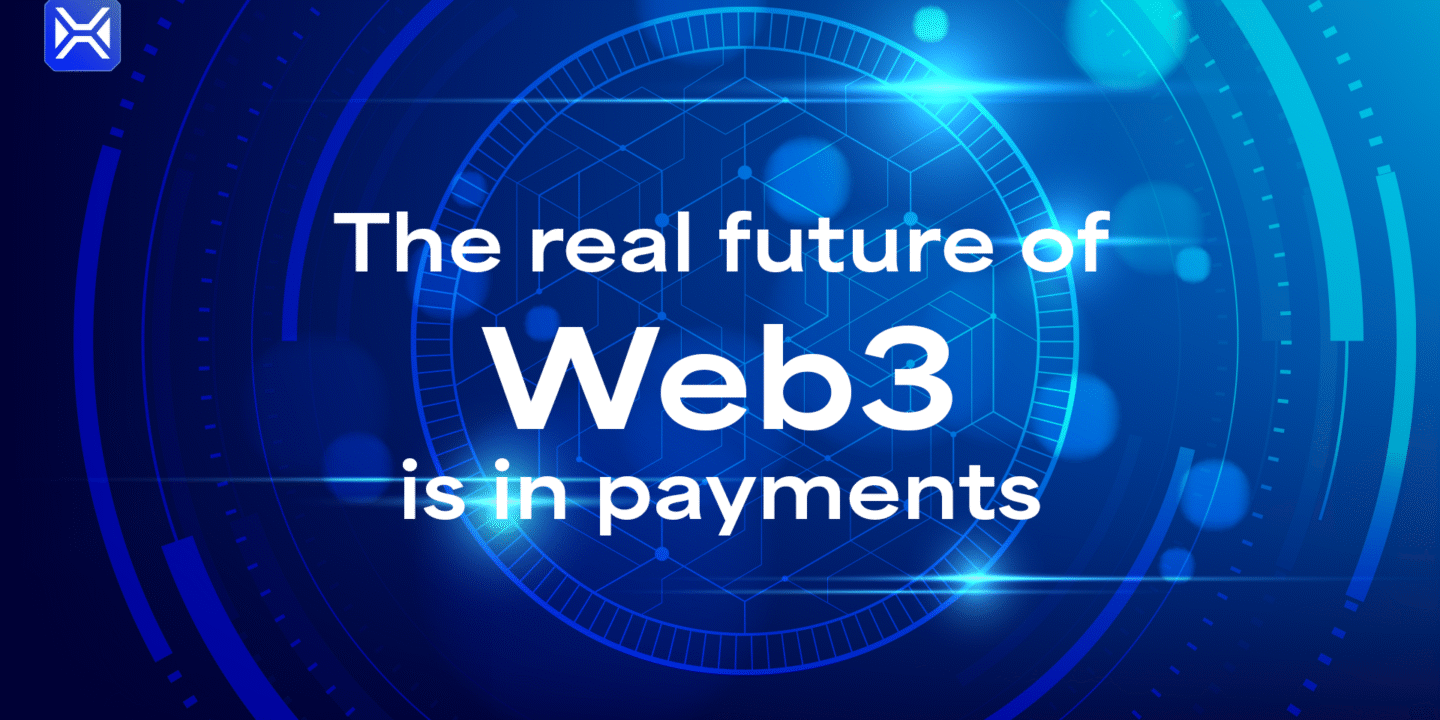
Web3 is evolving — but its identity is still shaped by speculation.
While the technology promises decentralization, user empowerment, and borderless finance, in practice much of the space is still dominated by trading, staking, and yield farming. Billions continue to flow through DeFi protocols, but the use of crypto in everyday life remains surprisingly rare.
According to the 2025 Reown/YouGov survey, 34% of active crypto users in the U.S. and U.K. have used crypto for payments — a number that now surpasses DeFi activities like staking. What’s more, 37% of respondents cite payments and AI as the most promising drivers of crypto adoption this year, and 27% believe payments will become the dominant on-chain experience in the next 3-5 years.

Yet despite growing interest, payments still lag behind in actual usage. The 2025 State of On‑chain UX report shows that crypto is primarily used for trading (56%) and DeFi (45%), while only 47% of users are applying it for real-world transactions.
Even stablecoins, which should be ideal for payments, remain underutilized for this purpose. A recent report from J.P. Morgan highlights that just 6% of stablecoin demand — roughly $15 billion — is tied to real-world payments. The vast majority is still tied to trading and DeFi.
In short: DeFi still dominates, but payments are gaining ground.
To truly go mainstream, Web3 must shift from speculation to practical utility. And the most immediate, impactful frontier is payments — the missing link between Web3 potential and everyday relevance.
Why payments are the key to real adoption
In fintech, mass adoption always follows utility — and that utility starts with payments.
From PayPal to Revolut and M‑Pesa, the services that reached everyday users weren’t built on complexity. They made it easy to send and spend money, and that’s what drove growth.
Crypto can do the same — but only if it moves beyond speculation and becomes part of daily routines. Payments are the most natural, repeatable use case in finance. People don’t need to be convinced to pay — they just want it to be fast, secure, and reliable.
Most crypto tools focus on tech — not on the user experience that builds trust. But real-world adoption depends on that trust.
If Web3 wants to go mainstream, it must start at the most familiar place: the checkout.
Sky Pay: closing the utility gap
While most Web3 tools focus on finance for developers and traders, Sky Pay is designed for everyday users and real businesses — bringing practical crypto payments to the forefront of adoption.
At its core, Sky Pay is a multi-functional payment gateway, wallet system, and API-ready infrastructure that enables seamless, scalable, real-time transactions — both online and in-store.

Key features that bridge the usability gap:
🔹 QR invoicing for real-world purchases
Merchants can create payment requests via QR code — turning any retail checkout or online store into a crypto-ready POS.
🔹 Real-time transaction tracking
Sky Pay provides full visibility into payment status via dashboards and smart callbacks — ensuring smooth, verifiable settlements.
🔹 TRON-based architecture with future multichain support
Built on TRON for speed and low fees, with expansion planned across BNB Chain, Ethereum, and Polygon — ensuring wide accessibility and scale.
🔹 Self-custodial wallet infrastructure
Wallets are auto-generated and fully non-custodial. Businesses and users retain full control over their keys — no third parties involved.
🔹 Automated fee and energy management
The system auto-replenishes TRX (for gas) from a master wallet, removing the friction and confusion that often blocks newcomers from transacting.
🔹 Modular API + webhook engine
Merchant-ready API with IP whitelisting, HMAC verification, and webhook-based updates — tailored for seamless integration into ecommerce, apps, and marketplaces.
By solving for UX, reliability, and scale, Sky Pay isn’t just a payments plugin — it’s the missing infrastructure layer that connects crypto with the real world.
Backed by the XSO token, Sky Pay powers a full-circle economy of spending, staking, and rewards — turning digital assets into daily financial tools.
XSO token: powering a real-world economy
At the center of the Sky Pay ecosystem is XSO — a token designed not for speculation, but for utility, rewards, and long-term value.
Unlike many crypto assets that rely solely on hype or price action, XSO functions as the economic backbone of a real payment infrastructure. It fuels transactions, enables cashback, and forms the foundation for loyalty and staking mechanisms.

🔹 Not just payment fuel — a full-circle utility asset
When users make payments via Sky Pay, XSO can be used for settlement, and in return, cashback and rewards are delivered in XSO — creating a closed incentive loop that benefits both users and merchants.
For long-term holders, staking XSO offers passive yield — allowing tokens to generate value while supporting the network.
🔹 Deflationary by design: fixed supply + burn model
XSO has a fixed supply of 1 trillion tokens, with no inflation risk.
A portion of the transaction fees and reward mechanisms includes burning tokens, creating a natural scarcity over time.
This deflationary model is not just a theoretical benefit — it’s a strategic design choice to ensure that as adoption increases, token value is reinforced by demand and reduced supply.
🔹 Loyalty integration made simple
XSO also serves as a rewards layer for merchant partners. Instead of managing complex point systems, businesses can offer real crypto rewards in XSO — programmable, transferable, and backed by an active ecosystem.
Building the future of crypto that works for people
For too long, crypto has been defined by cycles of hype and speculation — tokens rise and fall, yet real-world impact remains limited.
Projects like XSO mark a shift toward something more sustainable: a future where crypto is used, not just traded.
By focusing on payments, rewards, and everyday transactions, XSO reframes crypto as a tool — not just an asset. It’s about enabling people to shop, earn, and interact with money differently, without needing to understand complex blockchain mechanics.
And this matters — because payments are the clearest, most natural use case Web3 can offer. They happen daily. They create habit. They build trust.
That’s how mass adoption happens — not through promises, but through products people can actually use.
With Sky Pay as infrastructure and XSO as its engine, the project is building exactly that:
Crypto that works for real life → skyxso.com








No Comments